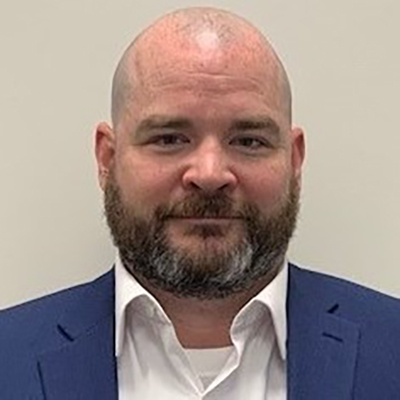40 under 40: Ryan Searles, IMEG Corp.

By SSN Staff
Updated 10:30 AM CDT, Wed June 30, 2021
 YARMOUTH, Maine—Ryan Searles brings a vast array of security experience to his everyday role at IMEG Corp.
YARMOUTH, Maine—Ryan Searles brings a vast array of security experience to his everyday role at IMEG Corp.
As Senior Consultant, Security Assessment and Protective Services at the Rock Island, Ill.-based company, Searles specializes in many different aspects of security consulting, including active shooter response training and workplace violence protection to make environments more safe and secure.
“I also provide vulnerability assessments, emergency action planning, policy and procedure development, and drills and rehearsals for organizations, as well as specialized consulting for high-risk terminations, proactive threat assessments, tabletop exercises, and business continuity planning,” he added.
Searles, 37, has served at IMEG Corp. for a year and a half. Overall, he has more than 17 years of professional experience in “in-the-field” security, force protection, and risk management for multiple-jurisdictional responses at local, state, regional, and national levels.
This includes leading tactical teams of 90-plus in dynamic, fast-paced environments and possessing a comprehensive background in complex problem-solving and relationship building derived from conducting domestic and global operations across five continents.
In addition, Searles has managed enterprise-wide risk management programs to protect life and safety, critical infrastructure, property, and equipment.
“My time in the U.S. military and contracting for both the government and private entities overseas prepared and inspired me to join the security industry,” Searles said. “Through this experience, I participated in maritime security and anti-piracy operations in the Indian Ocean, providing counterinsurgency and counterterrorism training, executive protection, diplomatic high-threat protection, and other security advising services. After nearly 12 years abroad, I returned home to provide similar services in the U.S.”
Technology
Searles noted that the top trends in security today revolve around technology.
“It is always improving and changing, so staying on top of the latest technology on the market can help us do our jobs better; it’s a full force multiplier,” he said. “As new and different threats emerge in the future, we must change what we’re doing as security professionals to adapt and protect the clients and organizations we work for, whether that’s cyber, physical, or something else entirely.”
When asked about the most exciting security technology in the industry today, Searles pointed to mass communication systems as a real difference-maker.
“I’m intrigued by the new and always-updating mass communication systems on the market and believe they can make a real difference in the way we provide protection,” he explained. “Additionally, gunshot detection and software for proactive threat assessments (both for individuals and locations) are a promising new tool to eliminate human error and speed up response time to a crisis or security threat. Gunshot detection systems can tie into mass communication so that crisis management teams can be notified within seconds of the system being triggered. The ability to tie different technologies and early warning signs – whether a natural or man-made disaster – can make a significant difference in life safety and response to crisis.”
Crisis Management
During these unpredictable times as a result of the COVID-19 pandemic, Searles stressed the importance of companies adjusting their crisis management plan to cope with what is currently happening worldwide.
As security professionals, we have to be able to live in the gray area right now,” he noted. “Our crisis management plans can’t be just black and white; we need to be able to adjust our plans to what is happening in the world. No one had a pandemic in their plans a year and a half ago, but most companies in the U.S. have responded well and quickly because they were able to adjust and evolve their plans. Personally, I have presented many webinars for clients and been providing consulting on crisis management.”
Staying Proactive
Searles noted that the security industry is moving from a reactive position to a proactive position.
“It’s allowing us to respond in new ways,” he said. “As always, we’re constantly on our toes, but we must also be very familiar with new threats and how we counter them. Going forward, we must update our situational awareness of what’s going on in the world and how different events can affect organizations and people.”
As for the future generation of security professionals, Searles pointed out the evolution of training and how education should play a more critical role in order to get more talented, young people involved in the industry.
“Many of us in the industry responded or served overseas very quickly in the post-9/11 world of security, law enforcement, or military,” he explained. “We learned from hands-on experience in intense settings with on-the-job training. Now, we need to focus more on educational programs and certifications for a wider range of opportunities within the security industry. Students can get degrees in criminal justice and specialize in homeland security, but we need more education paths for all different sectors to draw the interests of younger people into security.”
Comments